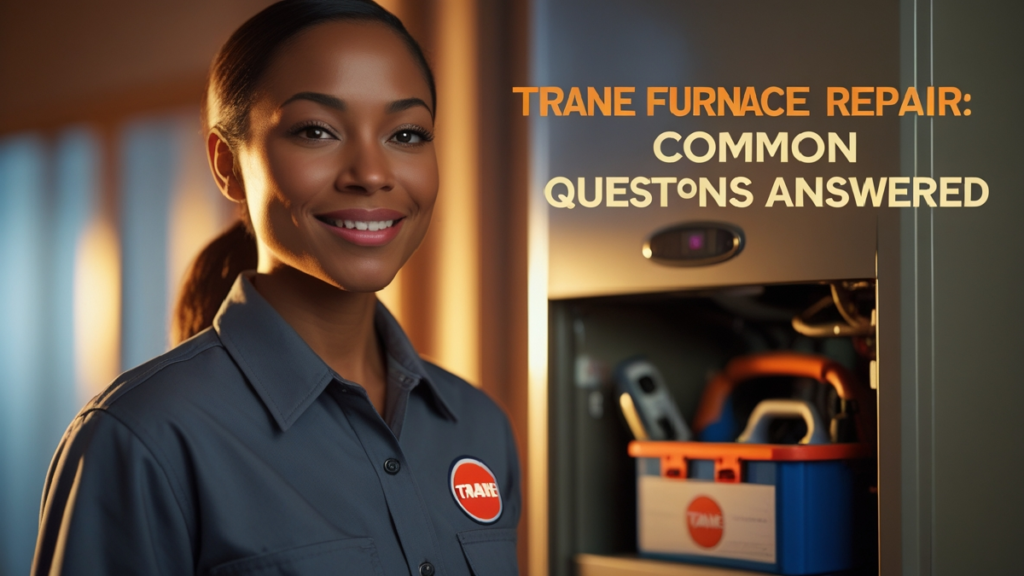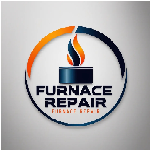Understanding the Importance of Trane Furnace Repair
Trane Furnace Repair As the seasons change and the temperature drops, a reliable heating system becomes an essential part of maintaining comfort and safety within your home. For many homeowners, Trane furnaces are a trusted choice due to their reputation for durability, efficiency, and long-lasting performance.

However, like any mechanical system, Trane furnaces are not immune to wear and tear over time, and they can develop issues that hinder their operation. Recognizing the common problems that can occur and understanding basic troubleshooting techniques can save you significant time and money.
It also ensures that your home remains warm and cozy during the coldest months. This comprehensive guide aims to provide a friendly yet professional overview of Trane furnace repair, helping homeowners identify issues early and knowing when to seek professional assistance.
By understanding your furnace better, you can take proactive steps to maintain it, extend its lifespan, and ensure it functions efficiently when you need it most.
Common Signs Indicating the Need for Trane Furnace Repair
Trane Furnace Repair Before diving into specific troubleshooting steps, it’s crucial to recognize the warning signs that suggest your Trane furnace might be in trouble and requires repair. One of the most noticeable indicators is inconsistent heating; if some rooms are warmer than others, or if your home isn’t reaching the set temperature, it could be a sign of underlying issues.
Strange noises such as banging, rattling, squealing, or hissing during operation often point to mechanical problems, loose parts, or airflow issues. Frequent cycling, where the furnace turns on and off rapidly, can also signal a problem, often related to overheating or thermostat malfunctions.
If your furnace refuses to turn on at all, or if you notice a sudden spike in your energy bills without a clear reason, these are additional signs that your system needs professional inspection.
Addressing these symptoms early can prevent further damage, improve efficiency, and extend the lifespan of your furnace. Recognizing these signs promptly is key to ensuring your heating system remains reliable and effective throughout the winter season.
Trane Furnace Repair: Diagnosing Basic Problems
Inspecting the Thermostat and Settings
Trane Furnace Repair The first step in troubleshooting your Trane furnace is to verify that the thermostat is functioning correctly and properly configured. Start by checking that the thermostat is set to ‘heat’ mode and that the temperature setting is higher than the current room temperature.
Sometimes, the problem is as simple as dead batteries in the thermostat, which can prevent it from communicating with your furnace. Replacing the batteries is a quick fix that often resolves minor issues. If your thermostat is wired directly to your furnace, inspect the wiring connections for any loose or damaged wires.
Resetting the thermostat by turning it off and on again or removing and reinstalling batteries can sometimes restore proper operation. Additionally, ensure that the thermostat’s display is active and that no error messages are showing. If you find that the thermostat is malfunctioning or not responding properly, replacing or upgrading it may be necessary for reliable operation.
Checking the Power Supply and Circuit Breakers
Trane Furnace Repair Electrical power issues are among the most common reasons a furnace fails to operate. Start by inspecting your home’s circuit breaker panel. Locate the breaker connected to your furnace and check whether it has tripped. If it has, reset it by flipping it to the ‘off’ position and then back to ‘on.’ Sometimes, a blown fuse or a loose wiring connection can also cause power disruptions.
It’s important to ensure that the power supply to your furnace is uninterrupted. If resetting the breaker doesn’t resolve the problem, and there are no visible signs of damage, it may indicate a more serious electrical issue that requires professional diagnosis. Never attempt to repair electrical components yourself unless you are qualified, as mishandling electrical systems can be dangerous.
Examining the Furnace Filter and Airflow
A dirty or clogged filter can severely impact your Trane furnace’s performance. Filters trap dust, dirt, and other airborne particles, but over time, they become coated and restrict airflow.
Reduced airflow causes the furnace to work harder, which can lead to overheating, system failure, or increased energy bills. To troubleshoot, turn off the furnace and remove the filter. Inspect it for dirt, dust, or debris. If the filter appears dirty or clogged, replace it with a new one designed for your specific Trane model.
Trane Furnace Repair Regularly changing filters—preferably every one to three months—can prevent many common problems and keep your furnace running efficiently. Additionally, ensure that vents and registers are unobstructed and open, allowing proper airflow throughout your home.
Common Trane Furnace Problems and Troubleshooting Tips
Furnace Not Turning On
Trane Furnace Repair If your Trane furnace refuses to start, begin by checking the power supply, thermostat settings, and circuit breakers as outlined earlier. If these are all in order, the issue might be related to the furnace’s control board, ignition system, or safety switches.
Many modern Trane models feature safety switches that shut down the system if airflow is restricted or if an internal fault is detected. Resetting the system or inspecting the safety switch can sometimes resolve the issue. For example, ensure that the air filter is clean, and vents are open to allow proper airflow.
If the problem persists despite these checks, it’s best to contact a professional HVAC technician. Internal components like the control board or ignition system require specialized tools and knowledge to diagnose and repair safely.
Furnace Blowing Cold Air
Trane Furnace Repair When your Trane furnace runs but only blows cold air, the problem could be related to the pilot light, electronic ignition, or a malfunctioning thermostat.
Check whether the pilot light is lit, especially in older models that rely on a standing pilot. For newer models, ensure the electronic ignition system is functioning correctly.
Additionally, a dirty or clogged air filter can cause the system to cycle improperly or fail to produce warm air. Replace any dirty filters and ensure vents are open and unobstructed.
If these steps do not resolve the issue, the heat exchanger or internal components might be faulty. In such cases, professional inspection is necessary to diagnose and repair the internal parts safely and effectively.
Unusual Noises During Operation
Strange noises such as banging, rattling, squealing, or hissing often indicate mechanical issues within the furnace. Loose parts, worn bearings, or a failing blower motor are common culprits. Turn off the furnace and visually inspect accessible components for signs of damage or loose screws.
If you notice loose panels or parts, tightening or securing them may resolve minor noise issues. For squealing or grinding sounds, lubricating moving parts or replacing worn bearings might be necessary.
Persistent or loud noises should never be ignored, as they can lead to further damage or complete system failure. Consulting a professional technician can help identify and fix the underlying cause before it worsens.
Frequent Cycling or Short Cycling
If your Trane furnace frequently turns on and off, it may be overheating or experiencing a thermostat calibration issue. Check that the air filter is clean and that vents are open and unobstructed. Overheating triggers the limit switch, which shuts down the furnace to prevent damage.
If the limit switch is faulty or triggers prematurely, it can cause short cycling. This problem often requires professional diagnosis, as internal sensors or switches may need adjustment or replacement. Proper calibration and repair ensure your furnace operates smoothly without unnecessary wear and tear.
Preventive Maintenance Tips for Trane Furnaces
Regular maintenance is essential for ensuring your Trane furnace remains efficient and reliable for many years. Schedule an annual inspection with a qualified HVAC technician, ideally before the start of the heating season. During this service, the technician will clean internal components, check for worn or damaged parts, test safety features, and calibrate the system for optimal performance.
Homeowners can contribute to maintenance by replacing filters regularly—every one to three months depending on usage and filter type—and keeping the area around the furnace free from clutter, dust, and debris. Additionally, inspecting accessible components for signs of wear or damage can help catch potential issues early.
Proper maintenance not only reduces the likelihood of unexpected breakdowns but also improves energy efficiency and indoor air quality, saving you money in the long run.
When to Seek Professional Trane Furnace Repair
While some basic troubleshooting steps can be safely performed by homeowners, certain issues require the expertise of a licensed HVAC technician. If you have checked power sources, thermostat settings, filters, and basic components but your furnace still does not operate correctly, it’s time to call a professional.
Complex problems such as faulty control boards, heat exchangers, gas line issues, or electrical wiring should only be handled by trained technicians to ensure safety and proper repair. Attempting to fix internal components without proper training can be dangerous and may void your warranty.
Professional technicians have the tools and experience to diagnose and resolve issues efficiently, restoring your furnace’s performance and your peace of mind.
Frequently Asked Questions About Trane Furnace Repair
How often should I have my Trane furnace serviced?
It is highly recommended to have your Trane furnace serviced at least once a year, ideally before the onset of winter. Regular annual inspections help identify minor issues before they escalate into major repairs, ensuring your system operates efficiently and reliably throughout the cold months.
Routine maintenance also extends the lifespan of your furnace and maintains optimal energy efficiency, saving you money on utility bills.
Can I repair my Trane furnace myself?
While simple tasks like replacing filters, resetting circuit breakers, or adjusting thermostat settings can be performed by homeowners, most internal repairs require specialized knowledge and tools.
Attempting to repair internal components, electrical wiring, or gas connections without proper training can be dangerous and may cause further damage.
If your furnace is experiencing complex issues, it’s safest to contact a licensed HVAC professional who can perform the necessary repairs safely and correctly.
What is the average cost of Trane furnace repair?
The cost of repairs varies depending on the nature of the problem, the age of the furnace, and the specific model. Minor repairs, such as replacing a thermostat or cleaning components, tend to be less expensive.
More significant repairs, like replacing control boards, heat exchangers, or gas valves, can be more costly. It’s best to get a professional diagnosis and estimate before proceeding with repairs to understand the expected costs and options available.
Conclusion: Keep Your Trane Furnace Running Smoothly
Maintaining a warm and comfortable home during the colder months begins with understanding your Trane furnace and recognizing early signs of trouble.
Regular inspections, timely troubleshooting, and professional repairs when needed are essential for extending the lifespan of your system and ensuring it operates efficiently.
If you encounter persistent issues or feel unsure about performing repairs yourself, don’t hesitate to contact a trusted HVAC technician. Your comfort and safety are worth the investment. Stay proactive with routine maintenance, and enjoy a warm, worry-free winter season knowing your Trane furnace is in good hands.


Leave a Reply